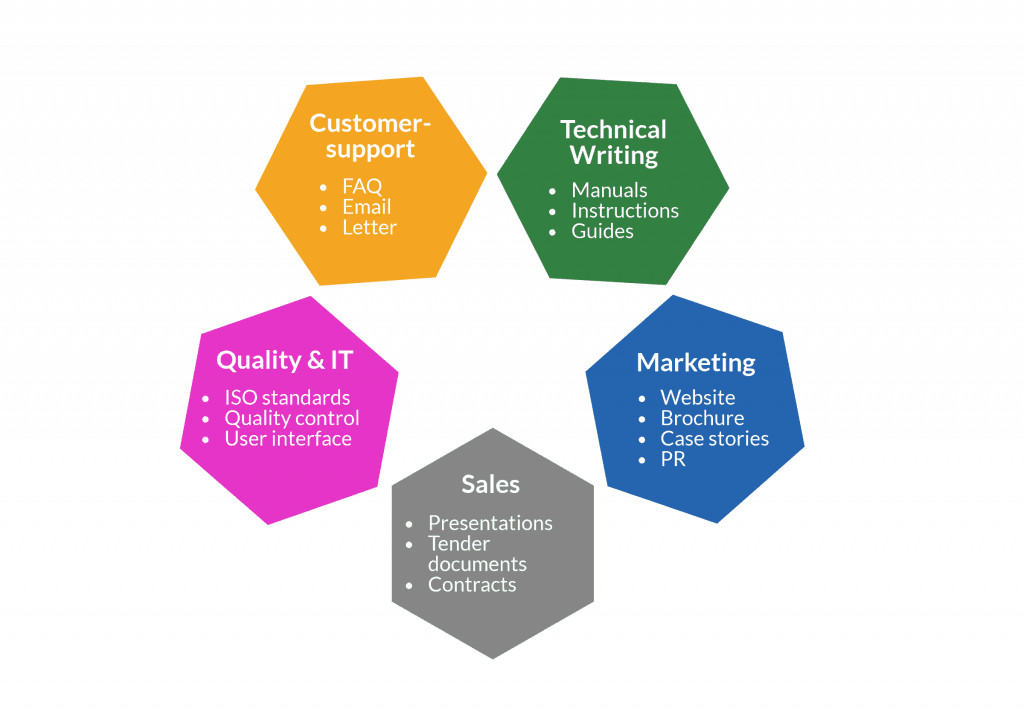
This is how you get started with terminology work
In part 1 of our blog post on terminology management, we described the advantages associated with managing terminology in a company and what consequences companies that do not manage their terminology might face.
Once you have convinced the management team to devote time and resources to get started on the terminology work by using the right arguments, cost-benefit calculations and ROI analyses, it’s time to get the process underway. In this blog post, you will gain a better understanding on: what terminology management means, what a term base should contain, who really has a stake in the terminology work, how you get the process started and what considerations you need to take into account.
What is terminology management?
Terminology management is used to maintain and control the company’s ‘corporate wording’. It is the process of structuring and collecting specific terms in glossaries or term bases so that every employee can access the correct terminology. Term bases normally contain the company-specific terms and fixed phrases, but they can also include industry-specific terms and concepts.
What is the difference between a glossary and a term base?
A glossary is a simple list containing words and their translations to other languages, while a term base is more of a structured and holistic approach towards terminology management. A term base is managed in a software program, and it also typically contains far more information than a glossary, such as definitions, subject, context, source, grammatical information, etc.
If the company decides to use glossaries, it might be difficult to maintain an overview of its contents and they might not be used in a consistent manner. However, if the company chooses to structure its data in a term base software program, then it becomes possible to integrate it with other systems. In that way, you can ensure that the terms are actually used each time.
For example, a term base can be integrated with translation software where the translator will automatically see a suggestion for the correct term when the system encounters it. At the same time, the automated QA system in the translation software will notify the translator if there is inconsistent use of terminology in the translated text. Furthermore, the ongoing maintenance of the term base and the updates made to the terminology will become a far simpler and smoother process, as it will all take place as people are working in the systems. During the translation, new terms can be suggested and then sent for approval before integration into the system.
What should a term base contain?
Your term base should contain the words and concepts that need to be identically translated every time. Among other things, this applies to company-specific words such as product names and industry-specific words which may have different translations depending on what industry or area they are used for. However, a term base can also contain acronyms, abbreviations, forbidden term or terms that are not to be translated (DNT). Additionally, it can contain words used in various IT systems and interfaces so that a certain button is called the same thing in the technical documentation as it is called in the system itself. A term base can also be used for key words and meta descriptions and, if relevant, specific words used by the target group so that you can ensure that you are speaking their language.
You can choose to have a single combined term base for all of your company’s terminology. You can then use it to state when and in what context any individual terms should be used. Your company can also choose to set up several different term bases such as, for example, one for marketing texts and one for technical documentation. After all, it is not always the case that the same term should be used for marketing texts as for the technical documentation.
Who can benefit from using the term base?
It is not just technical documentation departments and their technical writers that depend on terminology to do their job and deliver a professional product. Other departments can also greatly benefit from having access to a term base – it allows them to use the right terminology consistently and thereby deliver a professional product and the best customer experience. For example, marketing departments that make brochures, websites, etc. as well as sales departments that make presentations, offers, e-learning material, etc. and customer service departments that make FAQs and answer questions from customers.
Terminology management is thus contributing towards optimising the company’s global communications across departments. In addition, terminology management has a direct impact on the company’s branding and image – it results in a positive customer experience when the company manages to speak with a consistent voice.
When content writers, proof-readers and translators use term bases, it is most frequently in connection with them also using various other systems that help them to write, manage and translate their texts. Term bases thus act as a source of content for these systems.

How do you get started?
Before you start with the terminology work itself, there are certain considerations that you need to take into account. Some of the questions you should ask yourself are:
- Who should own the term base internally in the company?
- Who should have access to the term base?
- What software programs should be used, should it be integrated with other systems, does it require investments, etc.?
- Are there existing lists that need to be integrated, and/or should terms be extracted from existing lists?
- Does the company want to collaborate with an external agency to set up and maintain the term base? If yes, can your current translation agency help?
- Who should be allowed to suggest new terms?
- Who should be able to make changes to existing terms?
- Who should have the authority to approve suggestions for new terms?
When the various roles have been defined, you can then proceed with your plan of action and get the project launched. You can also set up a stable and sustainable workflow for your terminology management and select the people who will be responsible for it at both the translation agency and inside your company.
How do you build your term base?
If you start from scratch with your term base, it makes good sense to harvest terms from existing texts so that you have a foundation to build on – you can either do this by yourself or outsource this to your translation agency. Harvesting terms from existing texts can also be carried out on an ongoing basis in cases where a company needs to continually handle a great deal of new terminology (perhaps it might be terminology that they receive from others).
In other cases, your company might already have various lists that you want to integrate into the software.
Once the term lists have been made and once they have gotten the final stamp of approval from your company, your translation agency can take care of translating them to the relevant languages and then integrate them into the term base with the relevant information.
In cases where you/your company either does not have or does not want to have a central term base, or if the task is of an unusual nature, then the translation agency can make a term list that is solely for that specific task. It can be built up from reference material, previously translated texts and glossaries.
How do you maintain your term base?
The next step is to create a workflow for how the term base should continually be maintained and expanded. This is because in order for a term base to remain viable, it needs to have errors fixed, obsolete terms need to be deleted and new terms need to be added. This work is best done as collaboration between your company and your translation agency. However, it is important that employees from your company approve the final terminology.
Suggestions for new terms as well as changes or removals of current terms in the term base can come from both your company’s employees and from your translation agency.
When they come from company employees, it will typically be from the people that the company has selected as being permitted to suggest new terms. This can be internal reviewers that suggest new terms or changes of existing terms when checking translations and it can be employees involved in the launch of new products or services.
When the suggestions come from the translation agency, it can either be in connection with harvesting of terms from existing or newly translated texts, or it may be that translators come up with some suggested changes as they work on the texts.
No matter where the suggestion comes from, it needs to be passed on and approved by the people in the company who are authorised to do so. If there is a need for translating the term or the list of terms to other languages, the translations agency will take care of this and then send back the translated terms for approval before they are integrated into the term base software. No matter the workflow, it is always a good idea to have a written process of how to maintain the term list.

How do you collaborate in the best way possible with your translation agency when it comes to terminology management?
Most companies choose to collaborate with their translation company when it comes to terminology management, and it varies depending on how much of the work the people in the company want to do themselves. In any case, the translation agency will be involved in the process where necessary. The translation agency is used to working with terminology management and has a good process in place.
And as an aside, you can feel completely confident in leaving the task to your translation agency, since your term base will always remain the property of your company. The term base is also customer-specific and confidential, and it will therefore only be used for your company’s translations.
The translation agency has the software that needs to be used to create term bases, and if you choose to collaborate with your translation agency when it comes to terminology management, the software will often be part of the package. AdHoc Translations offers several different systems for terminology management. This allows us to adapt to our customers’ needs. Our preferred terminology software is called Memsource, and this software also allows your employees to search directly in the term base via an online link which can, for example, be placed on your intranet. Thereby everyone in the company will have access to the terminology. The people who need to be able to edit and add terms will have direct access to the system.
If you are thinking about starting up an internal terminology project, and if you need to add some more structure to your existing terminology – or even if you just want to hear more about terminology management – then we will be happy to assist you. You can contact us here for more details.
If you did not have the chance to read Part 1 of our blog post about terminology management, you can click here.








